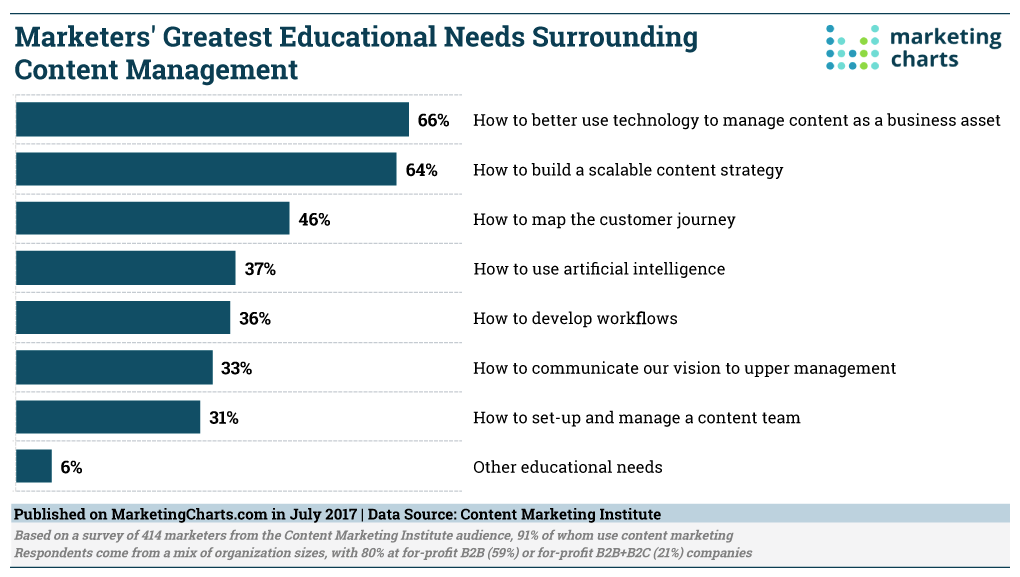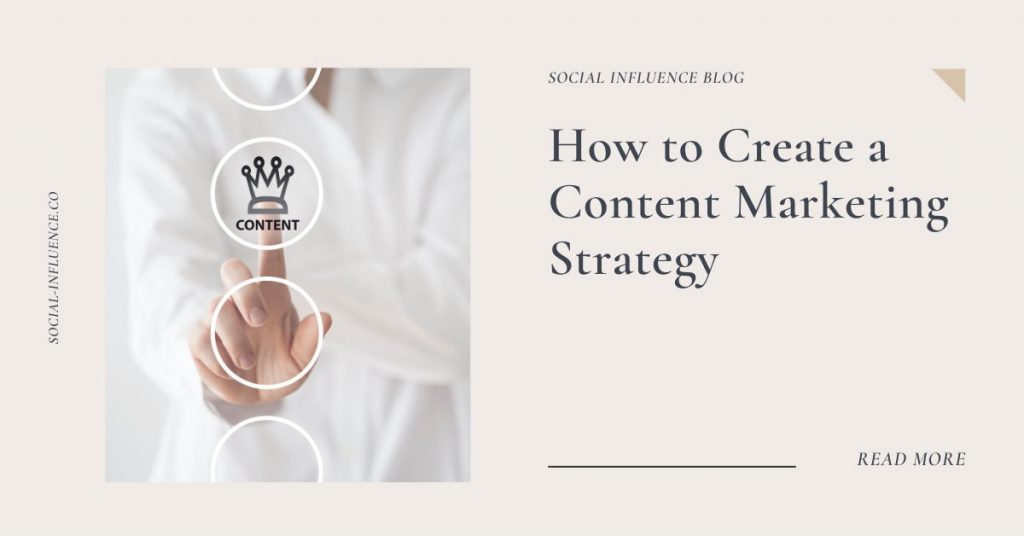|
Getting your Trinity Audio player ready...
|
Based on the latest research by Content Marketing Institute (CMI) and MarketingProfs, 63% of businesses don’t have a documented content marketing strategy. This is probably because businesses don’t know how to build a content marketing strategy. According to Marketing Charts, the greatest educational need surrounding content management is ‘How to better use technology to manage content as a business”.
If you are in that group and have been wondering how to create a content strategy for your business, this blog post is for you.
First of all, you will need a few tools which will make your life easier. These are;
– A content management system
– Analytics tools such as Google Analytics
– Social Media Scheduling tool
– Project Management tool
– Email Marketing tools such as Mailchimp
1 – Content Marketing Goals
To make content work, you need to understand your marketing and business goals so that you can create content that serves those goals.
Content marketing goals should directly impact your business objectives. These goals could be generating more leads, converting more leads into customers, driving more traffic to your website or growing and maintaining thought leadership. You can focus on one, two or even ten goals.
When setting goals, you need to make sure that these goals are achievable, relevant and measurable. In other words, you need to set SMART Goals that have the five following characteristics: Specific, Measurable, Achievable, Relevant and Timely.
2- Define Your Target Audience to create relevant content
Once you define your content marketing goals, you should create personas to define your target audience. These personas will show you the type of people you will be focusing your marketing efforts on. A persona should include;
- Demographics: gender, age, ethnicity, industry, job and income level
- Psychographics: habits, hobbies, values, beliefs and more
- Challenges & Pain Points: their daily struggles and how can your business fix these struggles
- What Drives Them to Purchase Our Product: what do they need to see from us that would convince them to buy from us
- Where Do They Find Their Information: TV commercials, radio, newspapers, internet, podcast etc.
- What Type of Content Do They Prefer: do they read blogs, and e-books, watch videos, listen to podcasts or check social media posts?
- How Do We Help: what type of content can you provide to help your audience and convince them to buy
You don’t need to limit yourself to a single persona. You can create a primary persona and a secondary persona to define your audience.

3- Define Your Content-Type, Channels & Tone of Voice
List all the content types that you will be publishing to meet your content marketing goals. For example, you can focus on blog posts to drive traffic to your website. If you would like to gain leads, you can create and publish how-to videos.
Once you define the types of content, define the promotional channels that you will be using to publish these content types. Will you be using YouTube to promote your how-to videos, or social media to promote your blog posts? These channels will naturally be the ones where your target market is hanging out the most. It is also important to set your specific goals for each channel.
The tone of voice is an important piece of your content strategy. It is not about what you say, but rather the way you say it, and the impression it makes on everyone in your audience who reads or hears you. It can be formal, optimistic, joyful, sincere, friendly and even sad (don’t make it sad please 🙂 ) Write down some examples. Make sure your tone of voice is unified across marketing channels.
4- Editorial Plan and Content Publishing
Thus far, you have identified your objectives, and personas, and defined the content types, channels and tone of voice. Now it’s time to plan the details.
Before you create the actual content, you need to have a publishing schedule. This will be your editorial calendar. Consider your editorial calendar as a roadmap for content creation with guides on the topics you will cover and which demographics you are trying to reach. This should include how often, when, on which channels and who will create and publish your content. For example, you can define how many blog posts or videos you will be posting per week, or how many e-newsletters will you be sending out per month.
To create an editorial plan, you can use a spreadsheet or a calendar app such as CoSchedule to map out a general plan. The plan can cover content for the next month or two. Include as much detail as possible. Mark down important dates and fill them with specific tasks such as posting on social media or making new videos. For each date, write down the topic name, the title of the piece and who you are targeting to. You can separate tabs for each type of content (such as blogs, social media posts etc.) so that it doesn’t look over-cluttered.
If you’re using a social media scheduler tool such as Later, you can also make use of their calendar views to plan and create your monthly content.
When you’re ready to write, we suggest you do research about what is out there and how your content can add value to your audience. It is always important to keep in mind the SEO factors and consistency.
Once you prepare your content marketing plan and start applying all of the above, you will have a chance to measure the performance of all the content you’re publishing. By using Google Analytics, you can figure out your best content channels as well as the content types so you can focus on these in the future.







